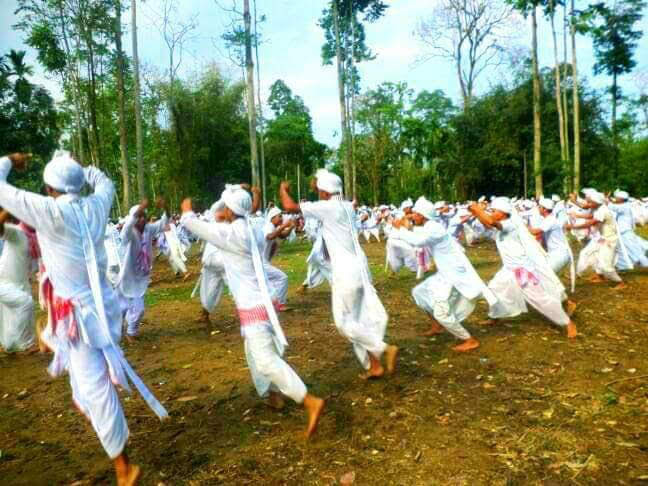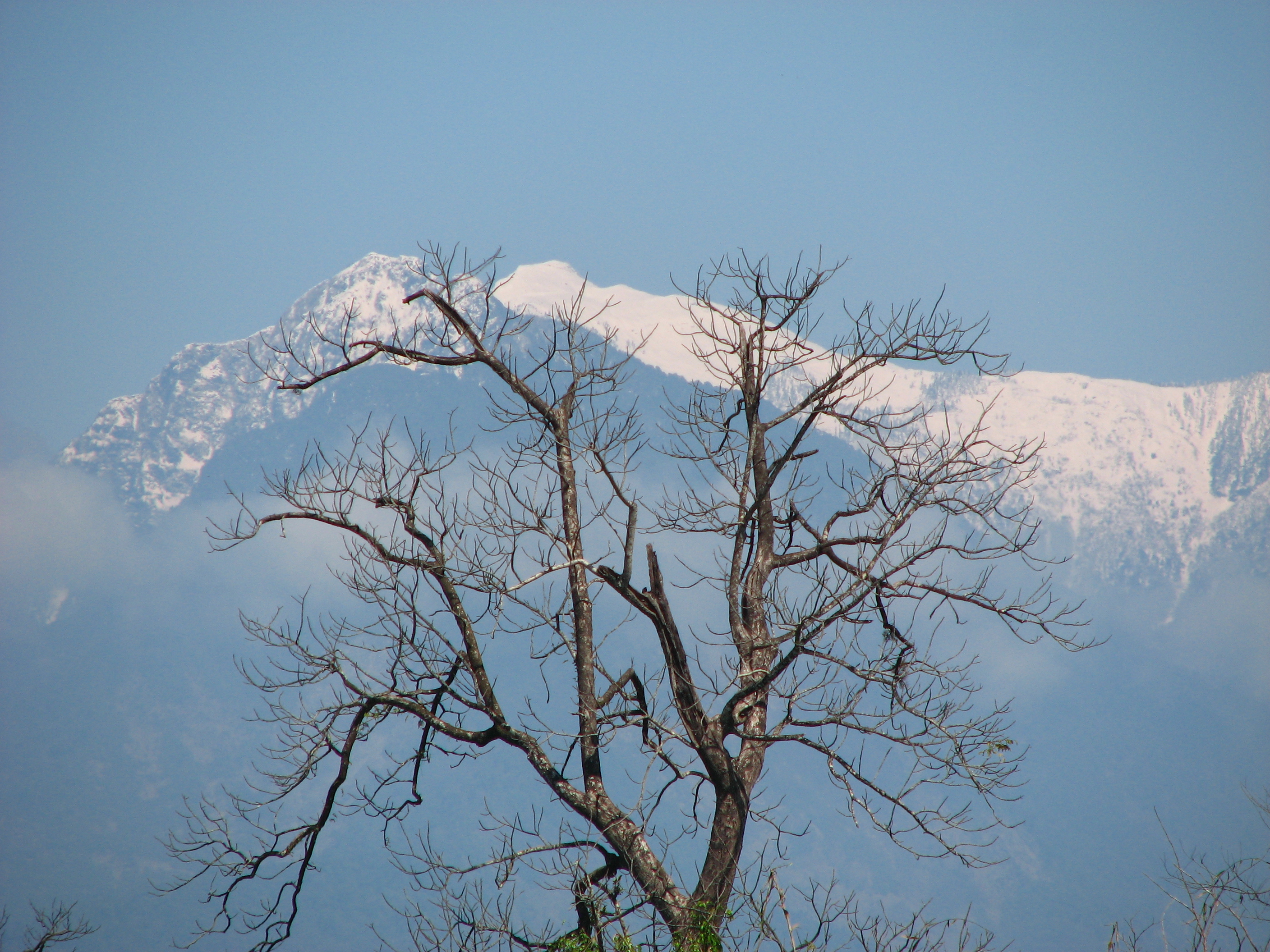|
Bhismaknagar
Bhismaknagar is an archeological site in Indian state of Arunachal Pradesh. It is located near Roing in Lower Dibang Valley district. The remains are generally ascribed to the rule of the Sutiyas, a Bodo-Kachari (Tibeto-Burmese) ethnic group who ruled over the region of Sadiya from 11th to 16th Century CE. Etymology The name ''Bhismaknagar'' was first observed in the Assam District Gazetteer of the year 1928—reference to a work by the 16th-century seer Sankardev that was popular in the Sadiya region (which eventually found its way into the later Chutia chronicles.) Historically, the region was known as ''Sadhayapura'' (the rulers being Sadhayapur-ishwar) as per copper inscriptions and the fort formed part of the capital region of the Chutia king ''Laksminarayana'', also known as ''Che-lung'' in Tai Buranjis (meaning "Great City" in English). Location It is located in Lower Dibang Valley district. The campus of the old city is spread over an area of 2500 acres. History ... [...More Info...] [...Related Items...] OR: [Wikipedia] [Google] [Baidu] |
Sadiya
Sadiya is a town in Tinsukia district, Assam. It was the capital of the Chutia Kingdom and after the downfall of the kingdom it became the seat of the ''Sadiya-khowa-Gohain'' of the Ahom kingdom. Extensive remains of buildings and fortifications built during the rule of the Chutias near Sadiya still point to the importance of the region in the past. Historically Sadiya referred to the Chutiya kingdom which included at times the districts of Lakhimpur, Dhemaji and Tinsukia. It is claimed to be the center of development of the eastern Assamese dialects, the inscription here are written in a Tai script. Its stands on a grassy plain, almost surrounded by forested Himalayan mountains, on the right bank of Lohit River which is locally (but erroneously) considered the main stream of the Brahmaputra River. The deepest point of the Brahmaputra River is located near this village. It is famous for a flower named ''satphul'' (the word means "blessing" or a "desert flower"), which is much ... [...More Info...] [...Related Items...] OR: [Wikipedia] [Google] [Baidu] |
Arunachal Pradesh
Arunachal Pradesh (, ) is a state in Northeastern India. It was formed from the erstwhile North-East Frontier Agency (NEFA) region, and became a state on 20 February 1987. It borders the states of Assam and Nagaland to the south. It shares international borders with Bhutan in the west, Myanmar in the east, and a disputed border with China in the north at the McMahon Line. Itanagar is the state capital of Arunachal Pradesh. Arunachal Pradesh is the largest of the Seven Sister States of Northeast India by area. Arunachal Pradesh shares a 1,129 km border with China's Tibet Autonomous Region. As of the 2011 Census of India, Arunachal Pradesh has a population of 1,382,611 and an area of . It is an ethnically diverse state, with predominantly Monpa people in the west, Tani people in the centre, Mishmi and Tai people in the east, and Naga people in the southeast of the state. About 26 major tribes and 100 sub-tribes live in the state. The main tribes of the state are Adi, Nyshi ... [...More Info...] [...Related Items...] OR: [Wikipedia] [Google] [Baidu] |
Roing
Roing is the district headquarter of Lower Dibang Valley district in the Indian state of Arunachal Pradesh. It is the last major township at the north-eastern frontier of India. Demographics As of 2011 India census, Roing had a population of 11,389 of which 6,064 are males while 5,325 are females. Roing has an average literacy rate of 88.39%, higher than the national average of 65.38%: male literacy is 91.94%, and female literacy is 84.35%. The population of Children age 0-6 is 1157 which is 10.16% of the total population of Roing. The female Sex Ratio is 878 against the state average of 938. Moreover, the Child Sex Ratio in Roing is around 875 compared to the Arunachal Pradesh state average of 972. Roing has total administration over 2,617 houses to which it supplies basic amenities like water and sewerage. Both Adi and Mishmi ( Idu) are the principal indigenous dwellers of Roing. Notable tourist attractions arMehao wild life sanctuary [...More Info...] [...Related Items...] OR: [Wikipedia] [Google] [Baidu] |
Sutiya People
The Chutia people (Pron: or ''Sutia'') are an ethnic group that are native to Assam and historically associated with the Chutia kingdom. However, after the kingdom was absorbed into the Ahom kingdom in 1523–24, the Chutia population was widely displaced and dispersed in other parts of Upper Assam as well as Central Assam. They constitute one of the core groups that form the Assamese people. Recent genetic studies have found that in the "tribal" and "caste" continuum, the Chutia people occupy an ambiguous position in the middle, along with the Ahoms and the Rajbanshis. The historic Chutias originally belonged to the Bodo–Kachari group(M)embers of the Mataks like the Morans, Barahis, Kacharis and Chutiyas, being members of the great Bodo family, had allied religious beliefs and customs. All of them worshipped a Primodial male deity and a Primodial female deity, and all of them were animist. with some suspected Shan admixtures; and it is estimated that their ruling fa ... [...More Info...] [...Related Items...] OR: [Wikipedia] [Google] [Baidu] |
Chutia Kingdom
The Chutia Kingdom (also Sadiya) was a late medieval state that developed around Sadiya in present Assam and adjoining areas in Arunachal Pradesh."(T)he Chutiyas seem to have assumed political power in Sadiya and contiguous areas falling within modern Arunachal Pradesh." It extended over almost the entire region of present districts of Lakhimpur, Dhemaji, Tinsukia, and some parts of Dibrugarh in Assam,"Their kingdom called Sadiya extended in the north over the entire region from the Sisi in the west to the Brahmaputra in the east. The hills and the river Buri Dihing formed its northern and southern boundaries respectively. Thus the Chutiya territory extended over almost the entire region of present districts of Lakhimpur, Dhemaji, Tinsukia, and some parts of Dibrugarh." as well as the plains and foothills of Arunachal Pradesh. The kingdom fell in 1523-1524 to the Ahom Kingdom after a series of conflicts and the capital area ruled by the Chutia rulers became the administ ... [...More Info...] [...Related Items...] OR: [Wikipedia] [Google] [Baidu] |
Lower Dibang Valley District
The Lower Dibang Valley district (Pron:/dɪˈbæŋ/) is an administrative district in the state of Arunachal Pradesh in northeastern India. It is the tenth least populous district in the country. History In June 1980, the Dibang Valley district was created from part of the Lohit district. On 16 December 2001, the Dibang Valley district was bifurcated into Dibang Valley district and Lower Dibang Valley district. Geography and timeline The headquarters of the district is Roing. Before it was carved out of the district on 16 December 2001, Anini housed the district headquarters. Transport The proposed Arunachal Pradesh Frontier Highway goes along the McMahon Line, and will pass through the Lower Dibang Valley district. An alignment map can be seehereanhere It will intersect with the proposed East-West Industrial Corridor Highway. Divisions There are two Arunachal Pradesh Legislative Assembly constituencies located in this district: Dambuk and Roing. Both are part of the Aruna ... [...More Info...] [...Related Items...] OR: [Wikipedia] [Google] [Baidu] |
Sankardev
Srimanta Sankardev( শ্ৰীমন্ত শংকৰদেৱ )(; ; 1449–1568) was a 15th–16th century Assamese polymath; a saint-scholar, poet, playwright, dancer, actor, musician, artist social-religious reformer and a figure of importance in the cultural and religious history of Assam, India. He is widely credited with building on past cultural relics and devising new forms of music (Borgeet), theatrical performance (Ankia Naat, Bhaona), dance (Sattriya), literary language (Brajavali). Besides, he has left an extensive literary oeuvre of trans-created scriptures (Bhagavat of Sankardev), poetry and theological works written in Sanskrit, Assamese and Brajavali. The Bhagavatic religious movement he started, Ekasarana Dharma and also called Neo-Vaishnavite movement, influenced two medieval kingdoms – Koch and the Ahom kingdom – and the assembly of devotees he initiated evolved over time into monastic centers called Sattras, which continue to be important socio- ... [...More Info...] [...Related Items...] OR: [Wikipedia] [Google] [Baidu] |
Buranji
Buranjis (Ahom language: ''ancient writings'') are a class of historical chronicles and manuscripts associated with the Ahom kingdom written initially in Ahom Language and later in Assamese language as well. The Buranjis are an example of historical literature which is rare in India; though they bear resemblance to Southeast Asian traditions of historical literature.The Buranjis are generally found in manuscript form (locally called ''puthi''), though many of these manuscripts have been compiled and published. They are some of the primary sources of historical information of Assam's medieval past, especially from the 13th century to the colonial times in 1828. There were two types of ''Buranjis'': the official Buranjis, which were compiled from the time of the first Ahom king Sukaphaa; and family Buranjis, which were compiled from the 16th century. The official Buranjis contained such information as description of important events as reported by reliable witnesses, correspondenc ... [...More Info...] [...Related Items...] OR: [Wikipedia] [Google] [Baidu] |
Villages In Lower Dibang Valley District
A village is a clustered human settlement or community, larger than a hamlet but smaller than a town (although the word is often used to describe both hamlets and smaller towns), with a population typically ranging from a few hundred to a few thousand. Though villages are often located in rural areas, the term urban village is also applied to certain urban neighborhoods. Villages are normally permanent, with fixed dwellings; however, transient villages can occur. Further, the dwellings of a village are fairly close to one another, not scattered broadly over the landscape, as a dispersed settlement. In the past, villages were a usual form of community for societies that practice subsistence agriculture, and also for some non-agricultural societies. In Great Britain, a hamlet earned the right to be called a village when it built a church. [...More Info...] [...Related Items...] OR: [Wikipedia] [Google] [Baidu] |

.jpg)


.png)


